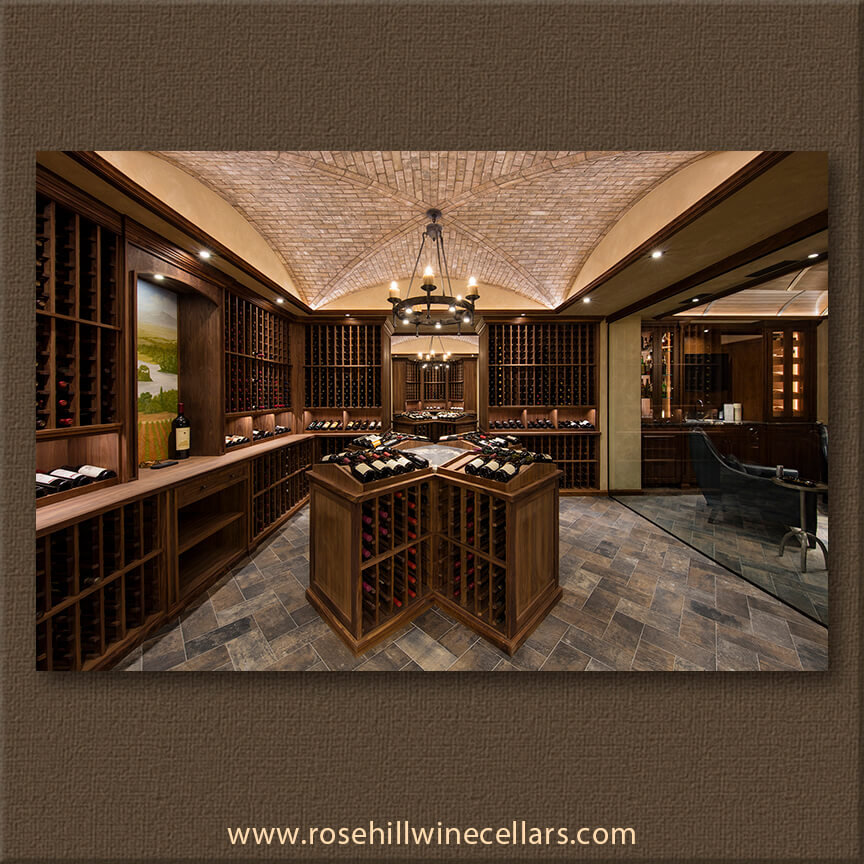
To us, large wine cellar cooling systems are a big deal.
Is your wine collection bursting at the seams? Before you create—or upgrade to—a large space to store and age wine, expect versatility from a standard unit to facilitate success. The right planning, experienced contractor, and robust wine cellar cooling unit are the perfect combination to protect wine in a large residential room or commercial facility.
A large wine cellar is going to require enough capacity to meet the requirements of your space. But a cooling unit should never be chosen based exclusively on the volume of the wine cellar. Our wine cellar cooling calculator is a great place to begin. The calculator’s “advanced mode” will be especially helpful once more in-depth design and construction parameters have been set.
Cooling units that do not have enough capacity to maintain 55-58°F, temperatures ideal for wine storage, will cause instability in wine. The system may end up running continuously or too frequently, dehumidifying in the process and jeopardizing relative humidity, which should hold steady between 50-70%. Too little humidity causes corks to crack, which leads to evaporation and degraded wine.
A cooling unit must also be intended for wine storage—not to cool people. As tempting as it might be to install a high-capacity home air conditioner in a wine cellar, comfort cooling equipment isn’t designed for low-temperature applications of 55-58°F.
Choosing the right unit
Wine Guardian offers many configurations of ducted and ducted split cooling units designed to cool large residential or commercial wine cellars (or even for medium-sized spaces designed with a lot of glass or for cellars that are accessed frequently as in restaurants). Ducted systems feature a grille on the inside wall of the room or cellar that is connected by flexible ductwork leading to a self-contained cooling unit outside of the wine cellar. That unit contains the evaporator, fans, compressor, condenser, and controls. In other words, the cooling unit mechanicals don’t take up valuable space within the racking system and are not visible in the wine room.
Our solutions also integrate with low ambient protection (or high), as well as with heaters and humidifiers, and multiple supplies and return ducts to meet the specific needs of your large application. Anticipate flexibility from your wine cellar cooling unit.
If access to a year-round water source is available, Wine Guardian also offers a water-cooled configuration for large spaces. Both air- and water-cooled ducted systems provide up to 14,100 BTUs/hour (4.13 Kilowatts) of capacity, but multiple units can be used for one space if needed (based on capacity or system redundancy). Whether you choose an air-cooled or water-cooled wine cooling unit, a seasoned contractor will be needed to configure the ductwork and to install the system.
When it comes to protecting an investment in wine, keeping track of conditions in a 7,000 cubic feet space can feel daunting. Wine Guardian has remote sensors that monitor both temperature and humidity in up to three locations within a cellar, which is ideal for multiple rooms being cooled by one unit or just one expansive room.
Ultimately, each large wine cellar application will be unique in some capacity. As long as a builder is experienced in construction and an investment is made in the best cooling technology, you can focus on growing your wine collection and enjoying it for years to come. Wine Guardian has the solutions you can depend on.

